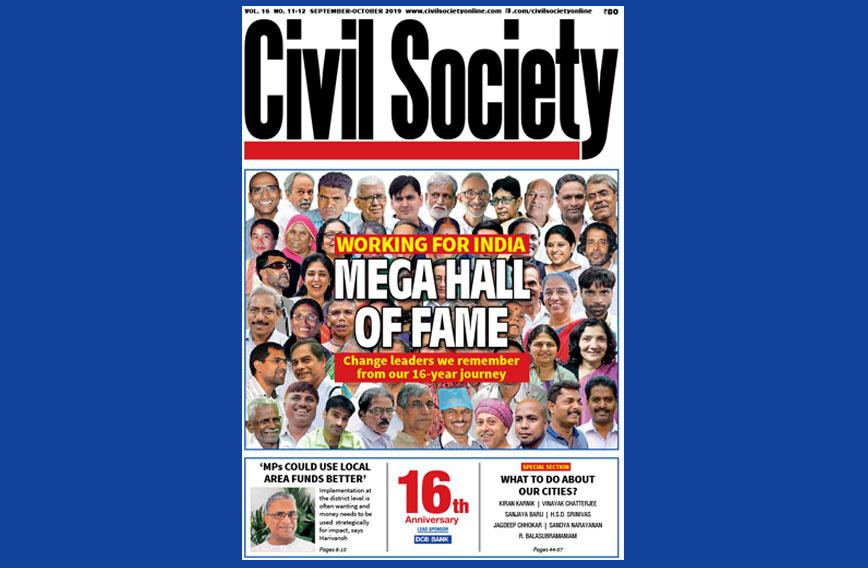
Civil Society's Sweet 16
September 2019
The running of a small media enterprise comes with many challenges but the journalistic satisfaction in bringing out our magazine every month is compensation in fair measure. It feels good to be able to do the stories we do and reach a growing number of appreciative readers. It is work we enjoy and doubly so because of its relevance in a complex emerging economy trying to balance growth with equity.
In 2003, when we started our venture, we were sure we were on to something exciting. India was in transition in multiple ways. We wanted to tell these stories of change. Instead of focusing on problems, we decided to go in search of solutions. With this as context, we went much beyond NGOs and activists to check out those entrepreneurs, doctors, lawyers, engineers and industrialists who were committing themselves to making a difference and closing the gaps in society.
In our journeys across India in 16 years we have come across thousands of changemakers about whom we have written in our magazine. We bring many of them together in this anniversary issue in what we have called The Mega Civil Society Hall of Fame.
We also have a special section on cities. What do we do about them as they attract an ever-increasing number of people? We have seven perceptive pieces on governance, healthcare, technology, migration, finance, waste and infrastructure. Cities are of great interest to us and we report on them through the year under these same heads.
Our interview with Harivansh, the Deputy Chairman of the Rajya Sabha, explores several areas of concern relating to the spending of local area funds by members of Parliament. Harivansh is of the view that a better system is needed so that use of the money goes beyond repairing constituency roads and other such minor works. He would like MPs to think about how they can have more impact — collectively, perhaps, wherever possible.
In Delhi, in the neighbourhood of Rajokri, a pond has been revived to serve as a component of a low-cost, natural sewage treatment facility. It is an example of the inventiveness that needs to be shown in the managing of our cities. The Rajokri facility brings down the cost of treating sewage to a fraction of what it is in a mechanical sewage treatment plant. More importantly, it promotes beautification and urban revival. In doing so it dramatically improves the quality of life in a congested and slum-like area.Other cities should look closely at this example of cleaning up a congested area with a low investment.



